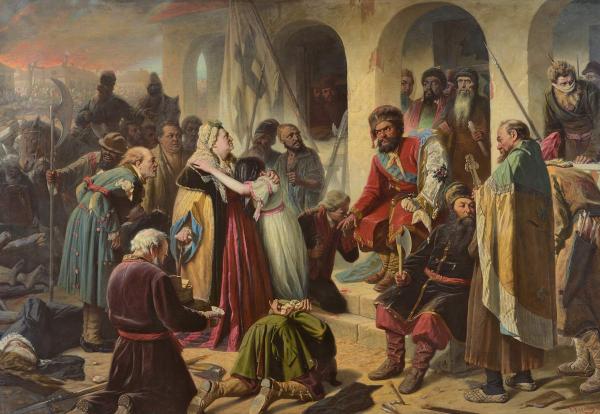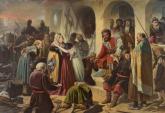Pugachev"s Judgement
1879
- Period Late 19th century
- CategoryHistory Painting
- Share
The death of Peter III gave rise to a large number of legends and led to the appearance of pretenders. The most famous of these was Emelyan Pugachev (1740/1742-1775), who was the leader in the peasant rebellion of 1773-1775. Pugachev’s origins lay in the Don Cossacks; he took part in the wars against Prussia and Turkey and was given a junior officer’s rank for his bravery in battle. He acted several times as petitioner on behalf of Cossacks and peasants. He was thrown into prison for this, but escaped in 1773 and fled to the Urals. In September that year he announced himself to the Cossacks as Emperor Peter III, and after assembling an army of more than 20,000 men he began a merciless war against the gentry. Pugachev displayed very fine military and organisational abilities, but in September 1774 his accomplices handed him over in exchange for a promise of clemency from the government, and he was executed on Bolotnaya Square in Moscow on 10 January 1775. Vasily Perov has treated the ominously gloomy scene of Pugachev sitting in judgement as a tragedy for the people, where each person is the bearer of his own truth. Pugachev appears in the picture as a fierce tyrant whom the other characters either oppose or obey. Their images recall characters from Pushkin’s famous story The Captain’s Daughter: the elderly woman embracing her weeping daughter reminds us of the brave Vasilisa Mironova, the wife of the commander of the Belgorod Fortress, and the young officer kissing Pugachev’s hand could be the traitor Alexei Shvabrin.

